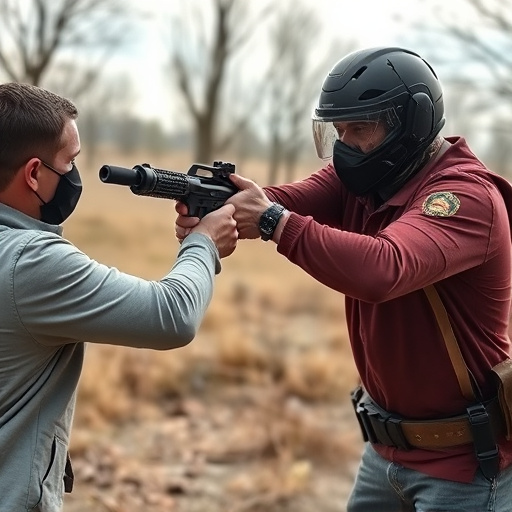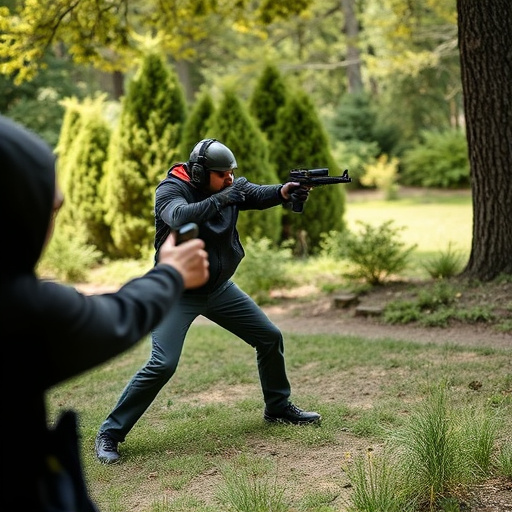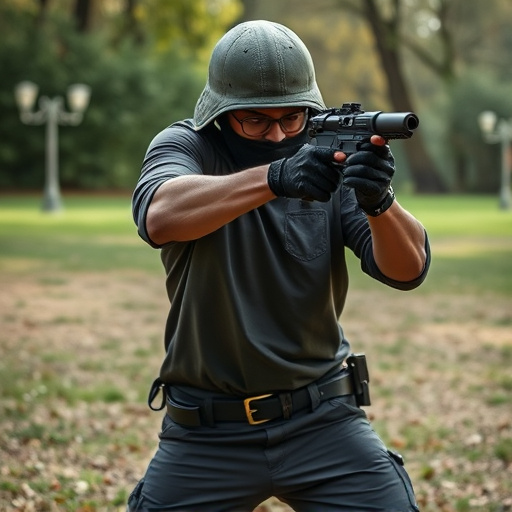Mini stun gun keychains offer quick self-defense but require understanding deployment risks and limits. Factors like Taser model, user health, environment, and training impact shock duration (2-5 seconds). Proper training, local laws, and awareness of range/power limitations are crucial for safe everyday carry.
“Tasers, often used by law enforcement and now even in personal defense devices like the mini stun gun keychain for everyday carry, can have significant effects on the body. This article delves into the duration of paralysis resulting from Taser deployment, exploring both the immediate impact and contributing factors. We examine how various elements influence the time individuals remain paralyzed and discuss safety considerations for mini stun guns, offering valuable insights for those interested in self-defense.”
- Understanding Taser Deployment Effects
- Factors Influencing Paralysis Duration
- Mini Stun Gun Keychain Safety Considerations
Understanding Taser Deployment Effects

Understanding the effects of Taser deployment is crucial, especially as the popularity of mini stun guns increases among those prioritizing everyday carry. These compact self-defense devices deliver a powerful electric shock, temporarily paralyzing the target. The duration of paralysis varies based on several factors, including the model of the Taser and the individual’s physical condition. Studies suggest that immobilization can last from 2 to 5 seconds, providing users with a critical window to escape potential threats.
However, it’s essential to recognize that prolonged or repeated exposure to Taser shocks may have adverse effects. The key to mitigating these risks lies in understanding proper deployment techniques and ensuring individuals receive adequate training. With the right knowledge, users can maximize the effectiveness of their mini stun gun while minimizing any negative consequences associated with its powerful electric pulse.
Factors Influencing Paralysis Duration

Several factors contribute to the duration of paralysis caused by a Taser’s electric shock, with each variable playing a critical role in understanding and mitigating its effects. One significant factor is the model and specifications of the Taser device itself. Modern stun guns have advanced settings, offering various output levels and pulse durations, which can impact the severity and longevity of immobilization. For example, higher voltage outputs generally result in more profound muscle contractions, potentially extending the paralysis period.
Additionally, the physical characteristics of the individual receiving the shock are essential considerations. Factors like body mass index (BMI), muscular build, and overall health can influence how quickly an individual regains mobility after a Taser deployment. Larger individuals might experience longer durations of paralysis due to higher electrical resistance in their bodies. Conversely, regular exercise or athletic build may facilitate quicker recovery as muscles tend to release tension faster. The environmental context is another crucial aspect; wet or slippery conditions could increase conductivity, intensifying the shock and prolonging immobilization. Moreover, proximity to sensitive areas like the groin or chest can also impact the duration of paralysis, as these regions are closely associated with vital functions and nerve endings. Lastly, the training and experience of the officer using the Taser play a role in ensuring the device is deployed correctly, minimizing unnecessary prolongation of paralysis.
Mini Stun Gun Keychain Safety Considerations

Carrying a mini stun gun keychain for everyday use can offer added personal safety, but it’s crucial to be aware of potential risks and deployment duration. These compact devices deliver a powerful electric shock, incapacitating an assailant momentarily, which can give users time to escape or seek help. However, the effects vary; a typical stun gun provides a few seconds of paralysis, ranging from 3 to 5 seconds on average. This short duration means prompt use is essential for maximum effectiveness.
Safety considerations are paramount when carrying any self-defense tool. For mini stun gun keychains, users should familiarize themselves with local laws and regulations regarding their possession and deployment. Proper training in the device’s operation is vital to ensure accurate targeting and minimize accidental activation or harm to bystanders. Additionally, understanding the limitations of the device, including its range and power output, will help set realistic expectations for self-defense scenarios.
Taser deployment can lead to significant paralysis, with durations varying based on several factors. Understanding these effects and influencing variables is crucial for individuals considering a mini stun gun keychain for everyday carry. By being aware of the potential risks and taking safety considerations into account, users can make informed decisions while ensuring their personal security.
